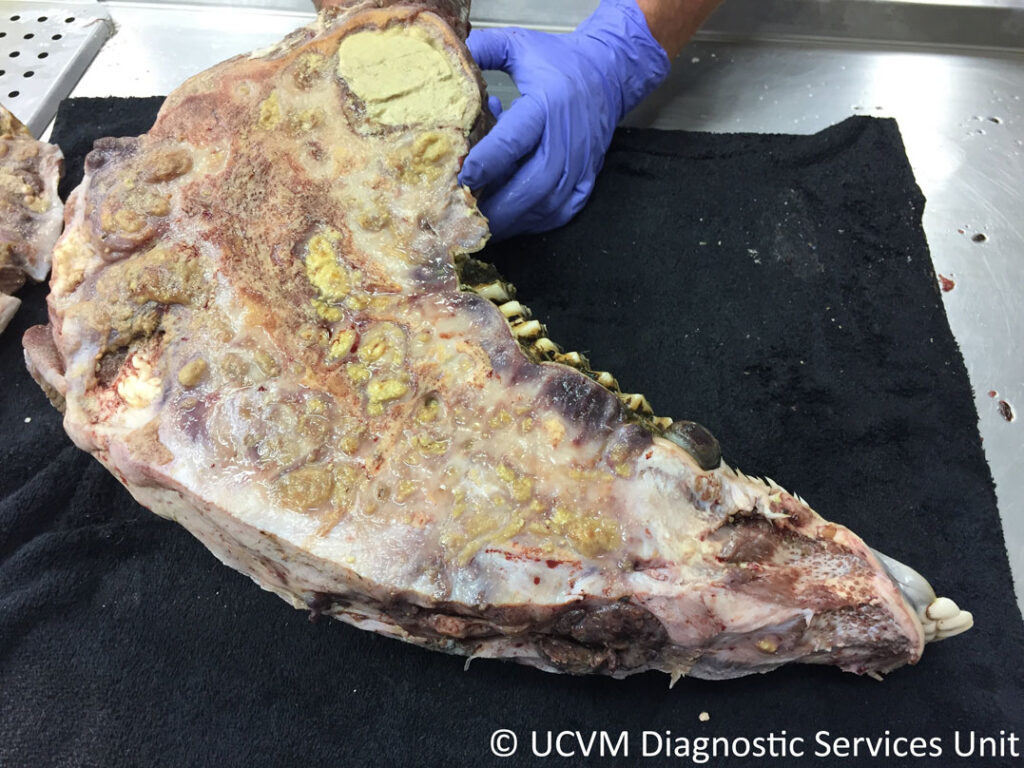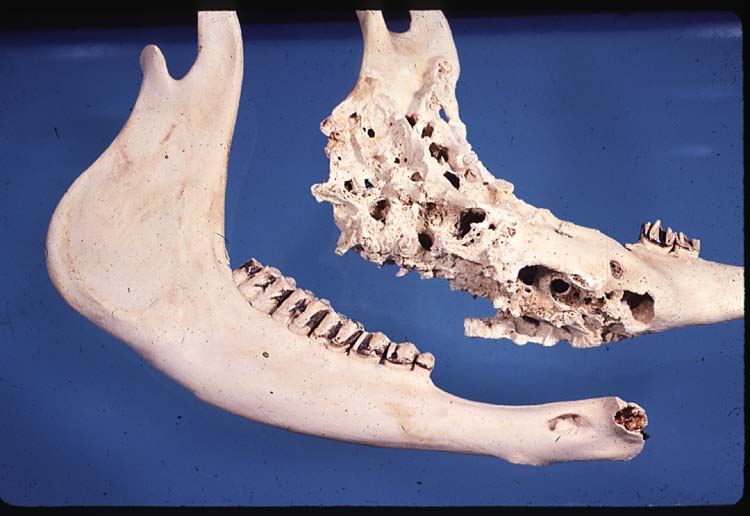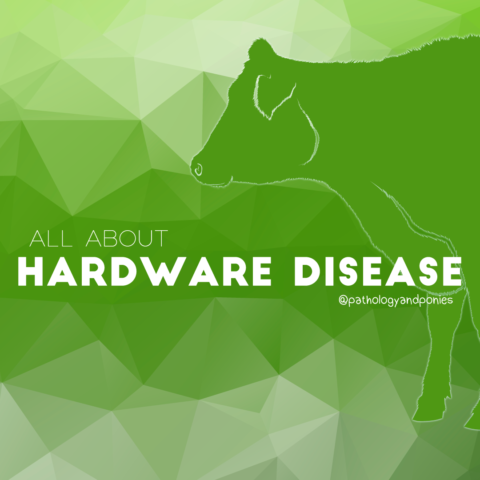Today’s path rounds are on 𝐥𝐮𝐦𝐩𝐲 𝐣𝐚𝐰!
𝐖𝐡𝐚𝐭 𝐢𝐬 𝐢𝐭?
𝐋𝐮𝐦𝐩𝐲 𝐣𝐚𝐰 is probably one of the more descriptive veterinary disease names, being literally a disease causing a lumpy jaw! This is a type of 𝐦𝐚𝐧𝐝𝐢𝐛𝐮𝐥𝐚𝐫 𝐨𝐬𝐭𝐞𝐨𝐦𝐲𝐞𝐥𝐢𝐭𝐢𝐬, or a bacterial infection of the mandibular bone.
𝐖𝐡𝐨 𝐠𝐞𝐭𝐬 𝐢𝐭?
Cattle get this disease! Other small ruminants like sheep and goats can probably get it too, but it is by far most common in cattle.
𝐖𝐡𝐚𝐭 𝐜𝐚𝐮𝐬𝐞𝐬 𝐢𝐭?
Lumpy jaw is caused by a bacteria called 𝐀𝐜𝐭𝐢𝐧𝐨𝐦𝐲𝐜𝐞𝐬 𝐛𝐨𝐯𝐢𝐬. The bacteria normally lives in the mouth of cattle, and only becomes a problem when there is some kind of damage to the gums, lips or cheeks. One of the most common causes of oral tissue damage leading to this disease is rough or pokey material in the hay or pasture that the cattle are grazing, such as foxtail. The bacteria will enter the wound and cause an infection, that eventually works its way to the bone via the lymphatic vessels.
𝐖𝐡𝐲 𝐢𝐬 𝐭𝐡𝐢𝐬 𝐚 𝐩𝐫𝐨𝐛𝐥𝐞𝐦?
Once in the bone, the bacteria forms a severe inflammatory reaction with accumulation of pus. In response to the infection, the bone begins to undergo 𝐫𝐞𝐬𝐨𝐫𝐩𝐭𝐢𝐨𝐧 (removal of bone) and 𝐩𝐫𝐨𝐥𝐢𝐟𝐞𝐫𝐚𝐭𝐢𝐨𝐧 (depositing new bone) at the same time. This leads to the mandible becoming enlarged, with the bone having a holey, Swiss cheese appearance due to the combined removal and deposition of bone. This can become so severe that the normal shape of the mandible is completely loss, and the animal can even begin to loose teeth or have them encompassed in the boney mass.
𝐇𝐨𝐰 𝐢𝐬 𝐢𝐭 𝐝𝐢𝐚𝐠𝐧𝐨𝐬𝐞𝐝?
Most of the time this condition can be diagnosed based on appearance and clinical suspicion. If a veterinarian really wanted to confirm it, an X-ray would show the holey, poorly shaped mandible that is essentially 𝐩𝐚𝐭𝐡𝐨𝐠𝐧𝐨𝐦𝐨𝐧𝐢𝐜 (not much else can cause that condition). The veterinarian can also take a sample of the tissue to look for the organism under the microscope.
𝐇𝐨𝐰 𝐢𝐬 𝐢𝐭 𝐭𝐫𝐞𝐚𝐭𝐞𝐝?
The treatment of choice is sodium iodide, given into the vein, repeated at 7-10 day intervals. This is fairly effective at killing the bacteria and stopping the growth of the lesion, however the mandible itself will never return to a normal shape or structure. If the animal is unable to eat properly or has other issues preventing it from having a good quality of life, it is often euthanized.
𝐏𝐡𝐨𝐭𝐨𝐬
1-2) Some cross-sections of lumpy jaw cases with the tissue still present.
3-4) “Boiled out” mandibles with no tissue remaining, showing the Swiss cheese appearance of the bone. ![]()
𝐒𝐨𝐮𝐫𝐜𝐞𝐬
Maxie, G. Jubb, Kennedy and Palmer’s Pathology of Domestic Animals, Volume 1. Sixth Edition.
Photos 1-3 courtesy of University of Calgary Diagnostic Services Unit.








